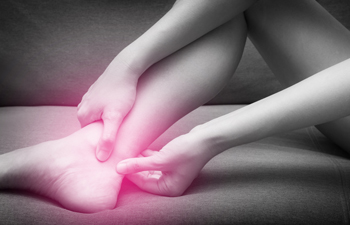When to See a Podiatrist for Achilles Tendinopathy
Tuesday, 07 September 2021 00:00
Achilles tendinopathy refers to the inflammation of the Achilles tendon, a thick band of tissue that connects the calf muscles to the heel bone. Symptoms of Achilles tendinopathy include pain in the back of the ankle and heel that worsens with activity, a restricted range of motion, swelling, redness, heat, or a lump in the tendon. People who play sports and those who have flat feet or high arches are at an increased risk of Achilles tendinopathy. While mild injuries can respond well to home treatments like resting, icing, compressing, and elevating the affected leg, more severe injuries will need prompt attention from a medical professional. If you heard a popping or snapping sound before you began to feel pain or have severe pain that doesn’t improve over time, it is suggested that you see a podiatrist as soon as possible for treatment.
Achilles tendon injuries need immediate attention to avoid future complications. If you have any concerns, contact Dr. Alexander Terris of Total Foot Care. Our doctor can provide the care you need to keep you pain-free and on your feet.
What Is the Achilles Tendon?
The Achilles tendon is a tendon that connects the lower leg muscles and calf to the heel of the foot. It is the strongest tendon in the human body and is essential for making movement possible. Because this tendon is such an integral part of the body, any injuries to it can create immense difficulties and should immediately be presented to a doctor.
What Are the Symptoms of an Achilles Tendon Injury?
There are various types of injuries that can affect the Achilles tendon. The two most common injuries are Achilles tendinitis and ruptures of the tendon.
Achilles Tendinitis Symptoms
- Inflammation
- Dull to severe pain
- Increased blood flow to the tendon
- Thickening of the tendon
Rupture Symptoms
- Extreme pain and swelling in the foot
- Total immobility
Treatment and Prevention
Achilles tendon injuries are diagnosed by a thorough physical evaluation, which can include an MRI. Treatment involves rest, physical therapy, and in some cases, surgery. However, various preventative measures can be taken to avoid these injuries, such as:
- Thorough stretching of the tendon before and after exercise
- Strengthening exercises like calf raises, squats, leg curls, leg extensions, leg raises, lunges, and leg presses
If you have any questions please feel free to contact our office located in Wilmington, DE . We offer the newest diagnostic tools and technology to treat your foot and ankle needs.
Read more about Achilles Tendon Injuries





